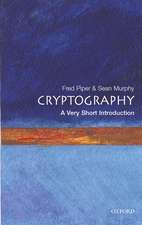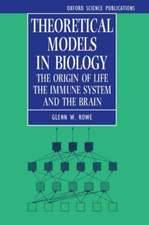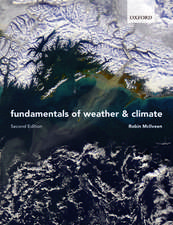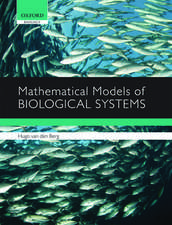Introduction to Numerical Geodynamic Modelling
Autor Taras Geryaen Limba Engleză Hardback – 16 dec 2009
| Toate formatele și edițiile | Preț | Express |
|---|---|---|
| Hardback (2) | 479.43 lei 22-36 zile | +41.71 lei 6-12 zile |
| Cambridge University Press – 22 mai 2019 | 479.43 lei 22-36 zile | +41.71 lei 6-12 zile |
| Cambridge University Press – 16 dec 2009 | 623.34 lei 43-57 zile |
Preț: 623.34 lei
Preț vechi: 700.38 lei
-11% Nou
Puncte Express: 935
Preț estimativ în valută:
119.28€ • 124.85$ • 99.28£
119.28€ • 124.85$ • 99.28£
Carte tipărită la comandă
Livrare economică 31 martie-14 aprilie
Preluare comenzi: 021 569.72.76
Specificații
ISBN-13: 9780521887540
ISBN-10: 0521887542
Pagini: 358
Ilustrații: 138 b/w illus. 5 tables 47 exercises
Dimensiuni: 180 x 254 x 22 mm
Greutate: 0.86 kg
Editura: Cambridge University Press
Colecția Cambridge University Press
Locul publicării:Cambridge, United Kingdom
ISBN-10: 0521887542
Pagini: 358
Ilustrații: 138 b/w illus. 5 tables 47 exercises
Dimensiuni: 180 x 254 x 22 mm
Greutate: 0.86 kg
Editura: Cambridge University Press
Colecția Cambridge University Press
Locul publicării:Cambridge, United Kingdom
Notă biografică
Taras Gerya was awarded a Ph.D. in 1990 from the Moscow State University and went on to become a Senior Researcher and Head of the Laboratory of Metamorphism at the Institute of Experimental Mineralogy, Russian Academy of Sciences, Moscow. He was awarded a Habilitation in petrology before moving to the Ruhr University of Bochum, Germany in 2000 as an Alexander von Humboldt Foundation Research Fellow. In 2004 he took up a position as Senior Research Scientist in the Department of Earth Sciences at ETH-Zurich, Switzerland, while continuing to be an Adjunct Professor in the Geology Department of Moscow State University. He was awarded a Habilitation in numerical geodynamic modelling by ETH-Zurich in 2008 and the Golden Owl Prize 2008 from ETH students for teaching of continuum mechanics and numerical geodynamic modelling. Dr Gerya is the author of over 50 papers on geodynamic modelling in leading peer-review journals.
Descriere
A user-friendly introduction to numerical modelling of geodynamic processes, this textbook gives students and new Earth Science researchers a solid grounding in basic mathematical theory, before introducing key numerical and modelling methods. With 47 practical exercises and 67 MATLAB examples, this accessible resource encourages readers to experiment with geodynamic models.
Cuprins
1. The continuity equation; 2. Density and gravity; 3. Numerical solutions of partial differential equations; 4. Stress and strain; 5. The momentum equation; 6. Viscous rheology of rocks; 7. Numerical solutions of the momentum and continuity equations; 8. The advection equation and marker-in-cell method; 9. The heat conservation equation; 10. Numerical solution of the heat conservation equation; 11. 2D thermomechanical code structure; 12. Elasticity and plasticity; 13. 2D implementation of visco-elasto-plasticity; 14. 2D thermomechanical modelling of inertial processes; 15. Seismo-thermomechanical modelling; 16. Hydro-thermomechanical modelling; 17. Adaptive mesh refinement; 18. The multigrid method; 19. Programming of 3D problems; 20. Numerical benchmarks; 21. Design of 2D numerical geodynamic models; Epilogue: outlook; Appendix: MATLAB® program examples; References; Index.
Recenzii
'A great introduction to computational geodynamics with vivid examples, hands-on exercises and step-by-step derivations of formulas. Even better than the first edition.' Sascha Brune, Das Helmholtz-Zentrum Potsdam – Deutsches GeoForschungsZentrum
'This book is so much more than an introduction to geodynamic modelling. Taras Gerya opens the world of geodynamic experiments by taking the reader through a carefully designed set of hands-on programming exercises that will convince you that modelling is not terribly complicated, but a process to logically follow through. Go ahead and get started!' Susanne Buiter, Geological Survey of Norway
'This comprehensive textbook challenges all solid Earth scientists to give geodynamic modelling a try in a hands-on, empowering style. The new edition covers even more ground, including cutting-edge topics. A great achievement, and the community will be the better for it.' Thorsten Becker, University of Texas, Austin
Praise for the first edition: '… the book provides excellent value for those wanting an introduction to the field. Anyone who works carefully through this book and completes all the exercises should be well prepared for further work in geodynamic modelling.' Geoscientist
Praise for the first edition: 'The book is written in a light and engaging style such that it deserves a place on the recommended reading list of any undergraduate or Masters course that includes geodynamics. Additionally, it will be a valuable resource for any geoscientist who wants to include geodynamic modelling within their research activities.' Geological Magazine
'This book is so much more than an introduction to geodynamic modelling. Taras Gerya opens the world of geodynamic experiments by taking the reader through a carefully designed set of hands-on programming exercises that will convince you that modelling is not terribly complicated, but a process to logically follow through. Go ahead and get started!' Susanne Buiter, Geological Survey of Norway
'This comprehensive textbook challenges all solid Earth scientists to give geodynamic modelling a try in a hands-on, empowering style. The new edition covers even more ground, including cutting-edge topics. A great achievement, and the community will be the better for it.' Thorsten Becker, University of Texas, Austin
Praise for the first edition: '… the book provides excellent value for those wanting an introduction to the field. Anyone who works carefully through this book and completes all the exercises should be well prepared for further work in geodynamic modelling.' Geoscientist
Praise for the first edition: 'The book is written in a light and engaging style such that it deserves a place on the recommended reading list of any undergraduate or Masters course that includes geodynamics. Additionally, it will be a valuable resource for any geoscientist who wants to include geodynamic modelling within their research activities.' Geological Magazine













